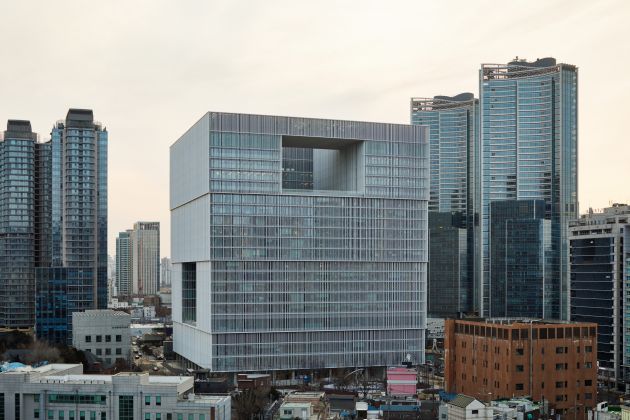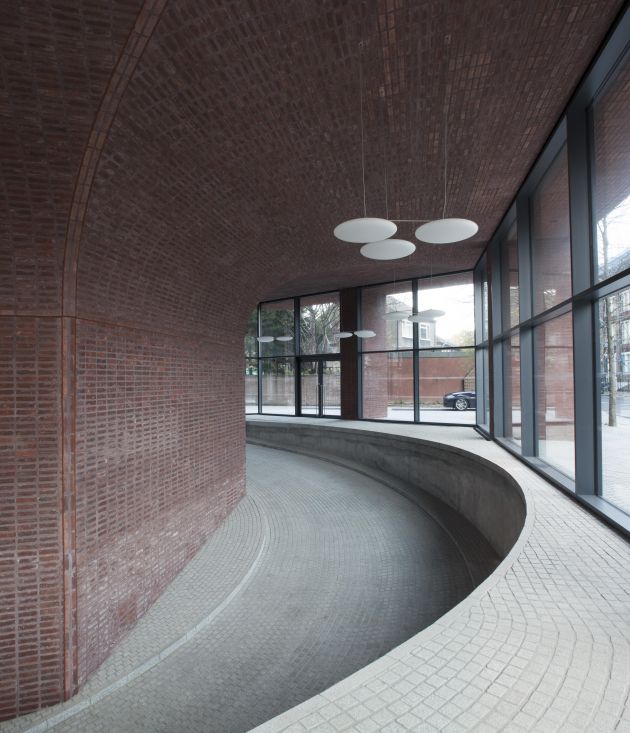 David Chipperfield Amorepacific Headquarters. Image: Noshe
David Chipperfield Amorepacific Headquarters. Image: Noshe
British architect David Chipperfield works with a strong sense of minimalism and his contrasting use of light and shadows
Sir David Chipperfield is a British architect best known for his minimalist yet historically-sensitive design work.
Born in 1953, David Chipperfield studied at the Kingston School of Art and the Architectural Association in London, graduating in 1977. As a graduate, he worked with many highly distinguished architects, including Norman Foster, Richard Rogers and Douglas Stephen.
Chipperfield started his own firm in 1985, under the name David Chipperfield Architects. Based in London, it now also has offices in Berlin, Milan and Shanghai. Much of his earliest work was undertaken in Japan, where he attempted to combine a sensitivity to the local architecture and culture with his modern design principles. The work was a good fit for him, and his aesthetic matched well with the Japanese style.
 Hoxton Press. Image: Ioana Marinescu
Hoxton Press. Image: Ioana Marinescu
His buildings include the German Marbach Museum of Modern Literature, which was awarded the Stirling Prize in 2007; the River and Rowing Museum in Henley-on-Thames, Oxfordshire; the America’s Cup Building in Valencia, Spain; the Neues Museum in Berlin; and the Hepworth Wakefield Art Gallery in West Yorkshire.
Chipperfield is well respected for his ability to make the projects he undertakes very site specific. His designs have never been as dynamic in shape as those of Frank Gehry or Zaha Hadid, but in their own more subtle way have always provided a sense of surprise.
The River and Rowing Museum was Chipperfield’s first major project in Britain. The building is a combination of traditional forms and materials with a Chipperfield modern flare. Inspired by traditional boat sheds and barns, the exterior is covered with planks of oak to match the local architecture in Oxfordshire, while the roof is made of stainless steel.
 James Simon Galerie Berlin. Photo by Ute Zscharnt
James Simon Galerie Berlin. Photo by Ute Zscharnt
His most famous work is perhaps Neues Museum in Berlin, which largely been destroyed in World War II. Chipperfield won a commission to restore the building’s original gallery spaces and add new ones. He used reinforced concrete for the new spaces, and recycled bricks for much of the restoration. Many of the ‘scars’ created by the war damage were preserved to mark the history of the building.
In the last decade Chipperfield also worked on two major museums in Britain: the Turner Contemporary in Margate and The Hepworth Wakefield in Wakefield. He also undertook a museum in a UNESCO World Heritage Site in the desert of Khartoum, Sudan. Named the Museum of Naga, the remote building blends artfully into the colours of the desert that surround it.
Chipperfield was knighted in the 2010 Honours, and has been nominated for the RIBA Stirling Prize on seven occasions. He received the RIBA Royal Gold Medal in 2011 and has been awarded a number of other prizes, including the Mies van der Rohe European Prize for Contemporary Architecture and the Japan Art Association’s Praemium Imperiale. Despite his acclaim, he has never sought the approval of the architecture community, stating in an interview with the New York Times that was not ‘interested in convincing the architectural community that I’m a genius.’ Many, however, will need no convincing.

















